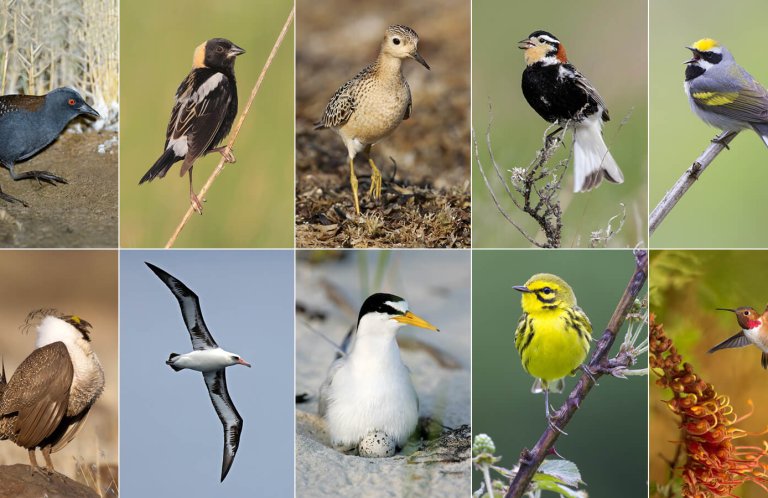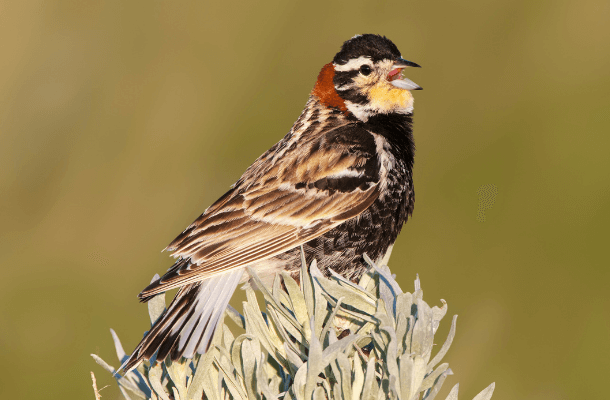Habitat Conservation for Long-billed Curlews in South Dakota and Beyond
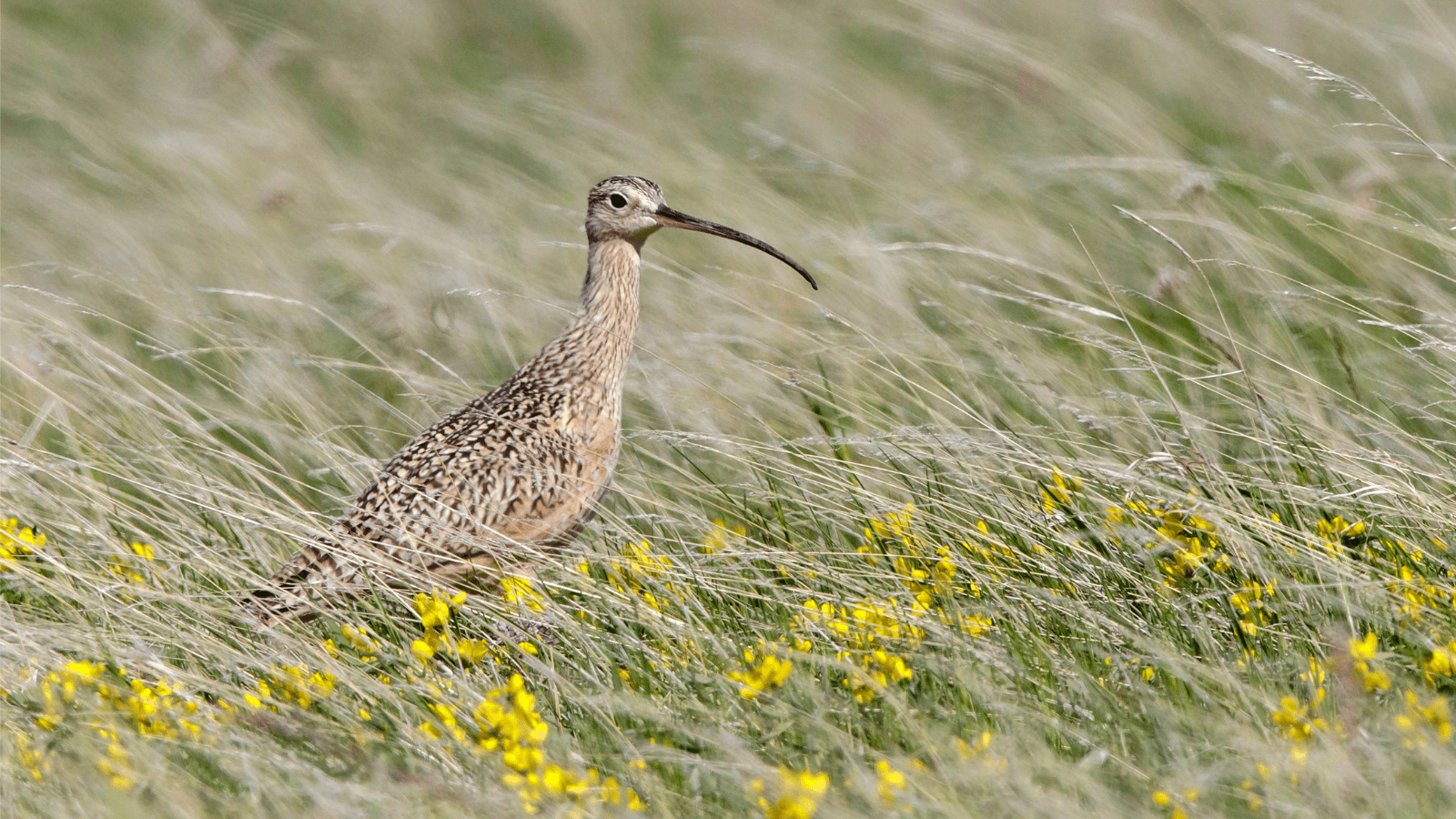

Every April in North and South Dakota, the Long-billed Curlew arrives to strut its stuff. The large shorebird mates, defends its territory, and forages for grasshoppers amidst the swaying grasses and cow pies. But the diverse grasslands that curlews and other birds need to thrive are dwindling — grassland bird populations plummeted by more than 50 percent in the past 50 years. Most of the remaining viable habitat is on rangelands managed by ranchers and other private landowners.
To give these birds hope of survival, rangelands need to remain grassland ecosystems, rather than be converted to cropland or other development. That's why American Bird Conservancy (ABC) has partnered with ranchers, government agencies, and other NGOs in the Great Plains for more than 15 years to provide guidance on managing lands to benefit birds and cattle alike. The effort has been so successful that ABC and partners are now gathering data that could help expand the practice across the curlew's full annual life cycle.
In spring 2022, ABC teamed up with North Dakota Game and Fish (NDG&F) and Intermountain Bird Observatory to tag nine Long-billed Curlews on ranches in North and South Dakota. This builds on four years of roadside surveys with NDG&F to understand where and how many curlews breed in the Dakotas. The tags have already tracked the birds' journeys south, and are now recording where they spend the eight-to-nine nonbreeding months. The hope is that the additional tracking data can help inform similar habitat conservation work throughout the birds' range, and help connect landowners through the birds that depend on them.
Ambassador for Grassland Species
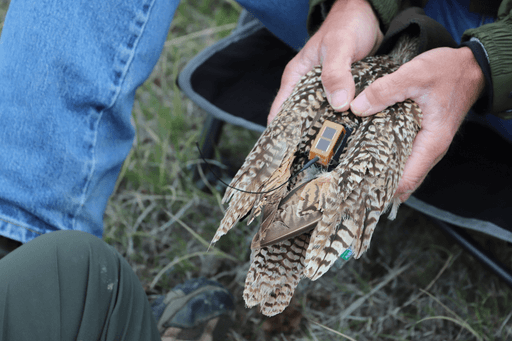
The Long-billed Curlew is a focal species for ABC in the Northern Great Plains because the species serves as a particularly good indicator of the overall health of the area's grasslands.
“When we're thinking of habitat diversity for an array of species, the curlew is a good model because it uses both short and tall grasses,” said Jessica Howell, Northern Great Plains Conservation Specialist for ABC.
They're a good pick for other reasons as well. The Long-billed Curlew is the largest shorebird in the U.S., with a hard-to-miss silhouette. “I remember the first time I saw a curlew, I did a double-take because it's this big, long-billed shorebird out with groups of cows,” said Howell.
These traits make them a good ambassador species when teaming up with producers like ranchers and farmers, who are typically already familiar with the bird as a seasonal visitor to their land. Their size and behavior also make it easier for biologists to survey them and track the bird's population status.
ABC and U.S. Department of Agriculture partner Natural Resources Conservation Science (NRCS) began to reach out to ranchers about the curlew habitat project two years ago. Since then, seven ranchers representing 28,000 total acres of rangelands have enrolled in a prescribed grazing system. This kind of management involves rotating cattle between different fields, ensuring that a range of grass heights are available to provide a greater diversity of wildlife habitat types throughout the summer. Additionally, 800 acres of former annual cropland has been seeded with perennial grasses that add natural habitat back to the landscape.
The project has already blown past its initial goal of 21,000 acres enrolled in prescribed grazing. But Long-billed Curlews only spend a few months breeding and raising chicks in the Dakotas. Fully protecting curlew habitat means not only expanding efforts in the Dakotas, but understanding the pressures these birds face farther south.
Where to, Curlew?
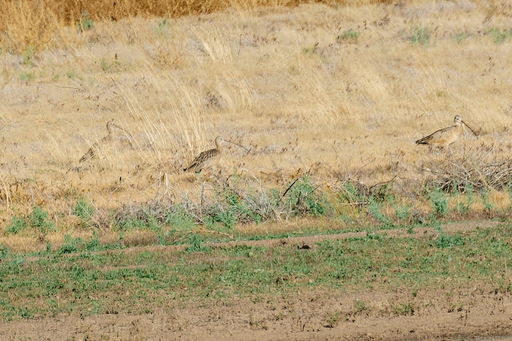
The nine curlews tagged with satellite and cellular transmitters this spring were captured on rangelands at six locations, with permission from landowners.
“I wasn't sure how people would respond to the idea of tagging birds, but all of them were really keen,” Howell said. “Nobody gave me a no, and everyone was just like, ‘Yeah, sure, let us know what you find.'”
To tag the birds, scientists located nests by observing curlews during dusk and dawn, when the male and female curlews switch egg-sitting duties. Once a nest was located, the researchers slowly approached with a net parallel to the ground, carefully dropping it on the bird. The curlew was taken a safe distance from the nest, banded with both an aluminum band and a small, plastic leg flag for an easy visual ID of that individual, then outfitted with a transmitter that Howell says sits “like a fanny pack” on the bird's back with straps around the legs.
Already, these high-tech fanny packs are providing incredible insights. Two of the birds, clearly ready for the beach, flew from northwest South Dakota to the southern coast of Texas in a single nonstop flight. “That's pretty wild to think about,” Howell said.
Another tagged bird spent late summer on agricultural lands and saline lakes in northeast New Mexico, then headed more than 600 miles southeast into Mexico in the fall. A third has settled in northern Texas, in a region where ABC has worked with partners to find tagged curlews in previous years.
ABC already works with landowners or supports habitat conservation at several of these locations. In Texas and Oklahoma, for instance, ABC informs grazing land management through the ABC-led Oaks and Prairie Joint Venture's Grassland Restoration Incentive Program (GRIP). In Mexico, ABC has worked with local partner Pronatura Noreste to improve grassland habitat in the Chihuahuan Desert.
"It's incredible to imagine that the same curlew that lays its eggs in a summer pasture in South Dakota feeds on another producer's hayfields in Texas over winter,” Howell said. “ABC Central Region staff work with producers in both states to maintain and enhance that habitat. Birds truly connect people and places, and that gives me so much hope."
The solar-powered transmitters should last multiple years, providing a clear map of the full annual life cycle of these nine individuals. Once researchers understand where the curlews go during the Dakotas' cold winters, and where the birds stop along the way, they will be able to more effectively funnel resources towards outreach about the birds and habitat work.
Howell ultimately hopes this research will connect ranchers and farmers working across the U.S. and Mexico so that they can share their conservation practices and experiences. “The landowners are the true habitat managers,” she said.
###
American Bird Conservancy (ABC) takes bold action to conserve wild birds and their habitats throughout the Americas. Inspired by the wonder of birds, we achieve lasting results for the bird species most in need while also benefiting human communities, biodiversity, and the planet's fragile climate. Our every action is underpinned by science, strengthened by partnerships, and rooted in the belief that diverse perspectives yield stronger results. Founded as a nonprofit organization in 1994, ABC remains committed to safeguarding birds for generations to come. Join us! Together, we can do more to ensure birds thrive.
Media Contact
Jordan Rutter
Director of Communications
media@abcbirds.org






































